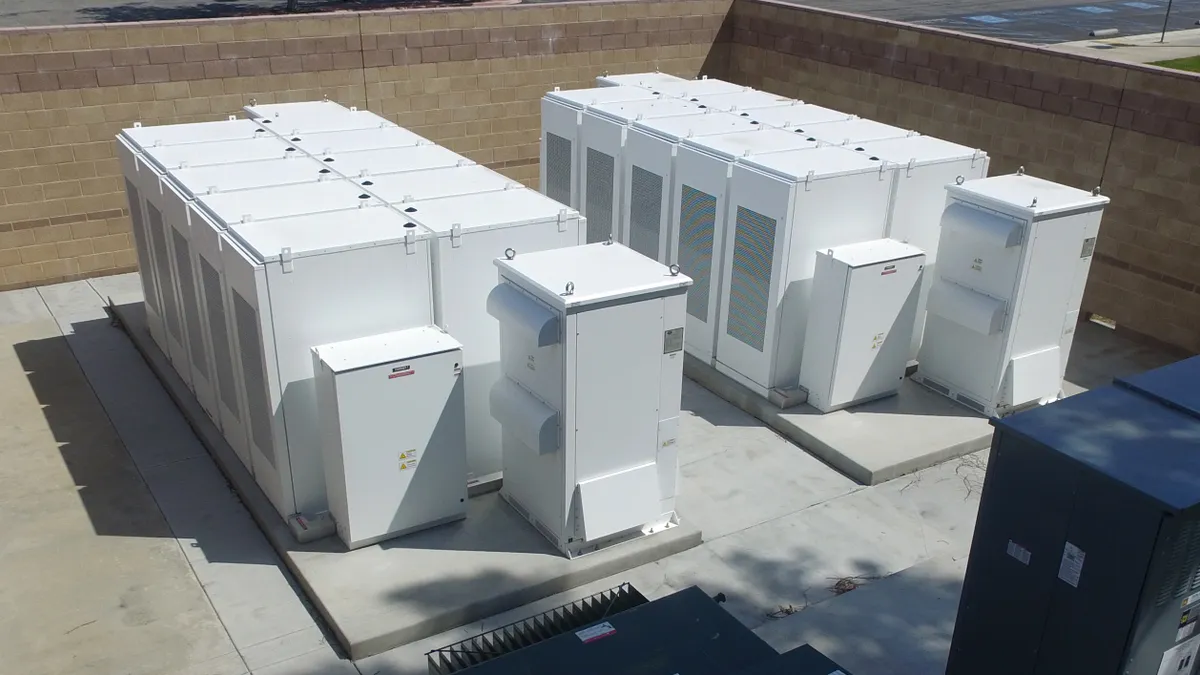The following is a contributed article by Kelly Speakes-Backman, CEO of the Energy Storage Association, and Heather Reams, executive director of Citizens for Responsible Energy Solutions.
Renewable energy has come a long way in the last decade and that's good for all of us. But a successful clean energy market and smart power grid can only go as far as advances in energy storage can take us.
With that in mind, U.S. Sens. Cory Gardner, R-Colo., and Martin Heinrich, D-N.M., introduced legislation Thursday that would expand the investment tax credit (ITC) to include standalone energy storage investments. As it is now, only a small subset of energy storage projects co-located with solar are eligible.
Why does this matter?
First, by making investment in energy storage more attractive it helps to increase the efficiency and decrease the costs of how energy companies generate and deliver electricity for all technologies.
Any energy company — whether powered by solar, wind or gas — can use energy storage to provide electricity more reliably and efficiently for their customers. By storing the electricity that's generated and saved until it's needed, energy storage can optimize grid operations. But because only some energy storage projects — those paired with solar — qualify for the tax credit there are limits to innovation in this space.
Members of Congress on both sides of the aisle support an "all of the above" strategy to energy, and the Gardner-Heinrich legislation helps accomplish just that.
Second, the tax credit would spur new investment in energy storage as a rapidly growing clean energy industry that already supports tens of thousands of jobs.
Businesses need policy clarity and certainty before making long-term investment decisions. The demand is already there. Consumers increasingly care about where their electricity comes from. They want clean and affordable energy options. And the power grid needs to be reliable as our economy becomes more electrified and digitalized, with more devices connected and using electricity.
Energy companies can meet this challenging demand with energy storage, but the current tax code is holding them back.
Take, for example, a business planning to spend $100,000 per year over the next 10 years on energy storage development. If that business could access the ITC, it could potentially save $148,000 on its $1 million investment over the life of the project.
Even as energy storage costs continue to decline and the credit begins phasing down in value, those tax savings can accelerate investment and get shovels in the ground for energy storage projects today.
The ITC already applies to investments in fuel cells, solar energy, microturbines, combined heat and power and geothermal heat pumps.
Right now, only ITC-eligible solar projects can apply the credit to storage costs, and only under a very narrow set of circumstances subject to recapture. Even qualification of solar and storage coupling can be cumbersome for projects to meet specific bureaucratic hurdles. It just makes good sense to remove those barriers and level the playing field for all clean energy technologies.
Despite this obstacle, energy storage has seen impressive advancements and deployments in recent years. According to the most recent release of the U.S. Energy Storage Monitor, the U.S. energy storage market nearly doubled in 2018 and is expected to double again in 2019, with an annual value exceeding $2.4 billion by 2020. But the U.S. isn't yet the leader in this space that it could be.
Parts of Asia are rushing to deploy more energy storage to modernize their country's power grids, with China, Japan and South Korea currently representing 43% of the global storage market according to Wood Mackenzie Power & Renewables. Australia represents a burgeoning energy storage market as well.
The U.S. risks falling behind in an industry that could lead to not only a more efficient, resilient, sustainable and affordable electricity grid, but also more job opportunities here in the United States. The U.S. has the opportunity now to take the helm as a global leader in energy storage.
Many businesses can't access this incentive for technology crucial to modernization of our power grid, and those that can face a high level of uncertainty. This omission in the current ITC means that taxpayers aren't getting the best possible value from this tax break.
Correcting this oversight would cost a modest amount of revenue. According to the Joint Committee on Taxation, adding energy storage to the ITC in 2018 would have cost only $310 million over 10 years. That's 95 cents from every U.S. citizen over a period of 10 years — less than the cost of downloading a single song online.
The potential return on investment makes this a worthwhile change, which is why similar legislation has enjoyed bipartisan support.
Department of Energy Secretary Rick Perry has called energy storage the "holy grail" of energy. Chairman Neil Chatterjee of the Federal Energy Regulatory Commission calls energy storage a "game changer." We strongly believe the time is now for the potential of energy storage to fundamentally change the way we generate and use electricity.
The Gardner-Heinrich bill would ensure that the U.S. maximizes its investments in energy storage and shift us toward a clean and renewable energy economy. It's a modest investment that could pay huge dividends in the future.






















